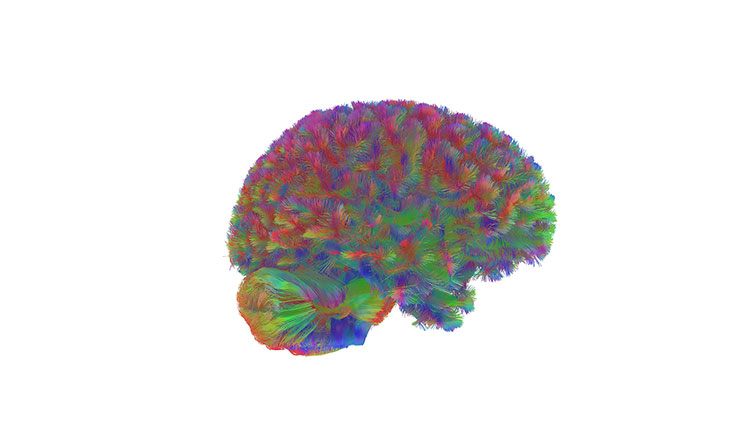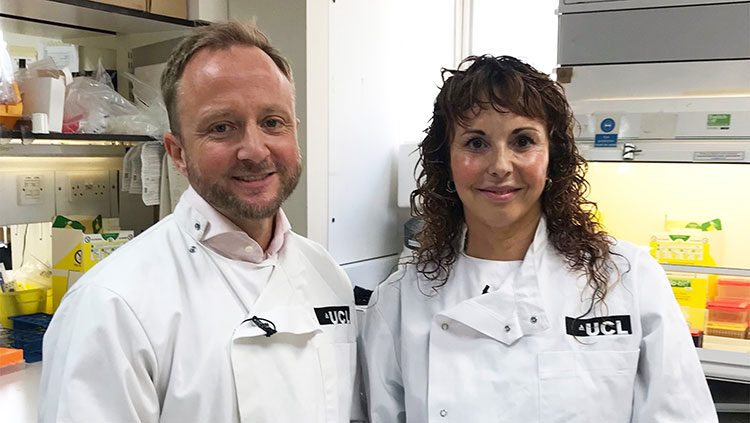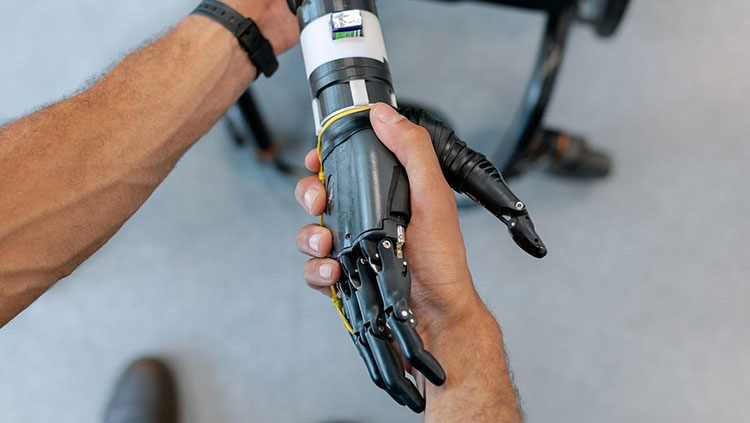ICYMI: Injectable Gels May Be the Future of Implantable Devices
- Published13 Mar 2023
- Author Christine Won
- Source BrainFacts/SfN

Many people with neurological disorders like Parkinson’s disease and epilepsy benefit greatly from deep brain stimulation, an invasive procedure where electrodes are implanted on the brain. What if, instead of receiving electrode implants, a patient could get soft gel injections? A discovery published by Swedish researchers in Science on February 23 demonstrates this ‘what if’ as a possibility.
Conventional electrode implants can lead to scarring, erode inside living tissue, and malfunction over time. The team developed a polymer cocktail and injected it inside the brain, fin, and heart of a zebrafish. Once injected, the polymer cocktail worked with the body’s natural sugars to create a gel, becoming more flexible and more importantly, biocompatible, merging chemically to conduct electrical signals needed to interface with a brain device.
Big Picture: The finding can help lead to the development of medical implants that better integrate with the body, opening new pathways to minimize the challenges that come with current electrode implants and devices for nerve stimulation and treatments for movement and seizure disorders.
Read More: Electrodes build themselves inside the bodies of live fish. Nature
More Top Stories
- A human brain organoid (3-D stem cell tissue cultures grown in vitro) transplanted into the damaged brains of adult rats successfully integrated with the rest of the brain, even responding to visual stimuli like flashing lights. It's another step toward a possible treatment for brain injury. The Scientist
- Boston University’s Chronic Traumatic Encephalopathy (CTE) Center studied 376 brains of deceased former NFL players and found CTE in 345 — about 91.8%. The analysis came the week of Super Bowl LVII to raise awareness about the brain disease. USA Today
- Neuroscientists observed the brain activity of 20 people with severe or untreatable epilepsy who were each implanted with 10-15 electrodes prior to surgery. They were outfitted with electrodes for a period of several days to help surgeons monitor and identify the area for surgical removal. What researchers observed was like a "dance," with different regions "listening" or "speaking" with one another, seemingly randomly zipping along states in-between order and chaos. MIT Technology Review
- College students may be able to improve their GPA simply by sleeping more, according to a study published in the Proceedings of the National Academy of Sciences. The two-year study of over 600 college freshmen found every hour of sleep lost on average per night correlated with a 0.07-point decline in GPA. Washington Post
- Scientific advances and technological innovations like stereoelectroencephalography (SEEG) or brain-navigating robots are transforming the treatment landscape for people with drug-resistant epilepsy. With SEEG, surgeons can implant tiny electrodes into brains to specifically identify and target trouble spots responsible for seizures in a minimally invasive procedure. NPR
- For the first time in the brains of mice, researchers at Stanford Medicine found mirror neurons — the brain cells that mimic and predict behavior. The neurons discovered in the ‘rage center’ of the mouse brain fired up both when they were fighting as well as when watching other mice fight. The mirror neurons also seemed to be keyed to aggression, and researchers next want to investigate whether these aggression-mirroring neurons not only copied the emotion but enabled it. Stanford Medicine
- If you’re an early bird, it may be thanks to genetic variants inherited from your ancestors. A recent study found Neanderthals and Denisovans passed DNA onto modern humans that could be the reason behind your proclivity for mornings. New Scientist
- A new study examined the brains of F16 fighter pilots to investigate how gravitational forces affect neuroplasticity and functional brain connectivity. Compared with controls, pilots showed increased activity in brain regions responsible for processing complex information or visual data. The findings could help shape the future of space travel. New Atlas
- A 19-year-old in China may be the youngest Alzheimer’s disease patient in the world. He first started experiencing memory problems at age 17. Previously, the youngest person to be diagnosed with Alzheimer's was 21. Science Alert
CONTENT PROVIDED BY
BrainFacts/SfN
References
Strakosas, X., Biesmans, H., Abrahamsson, T., Hellman, K., Ejneby, M. S., Donahue, M. J., Ekström, P., Ek, F., Savvakis, M., Hjort, M., Bliman, D., Linares, M., Lindholm, C., Stavrinidou, E., Gerasimov, J. Y., Simon, D. T., Olsson, R., & Berggren, M. (2023). Metabolite-induced in vivo fabrication of substrate-free organic bioelectronics. Science (New York, N.Y.), 379(6634), 795–802. https://doi.org/10.1126/science.adc9998
Also In Neuroscience in the News
Trending
Popular articles on BrainFacts.org









.jpg)









